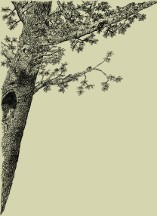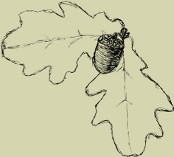42 41 40 39 38 37 36 35 34 33 32 31 30 29 28 27 26 25 24 23 22 21 20 19 18 17 16 15 14 13 12 11 10 9 8 7 6 5 4 3 2 1
Issue 2 (1960)
For aircraft structures, actually, only pine sapwood is admitted with exclusion of heartwood, considered brittle and not lending itself well to bending.
In order to fill the gap in available strength properties, comparative tests of Scots pine heart- and sapwood were undertaken. These tests were carried out in two stages. In 1949-1950 tensile and compressive strength, static and impact bending, shock resistance ability, shearing strength of wood and the glue line have been tested both for heart- and sapwood. Moreover, the following properties were ascertained, viz., hardness, modulus of elasticity, moisture content, specific gravity, growth layer frequency, proportion of late woo and resin content.
On the base of test results and their statistical analysis the following statement was made: — i.e. no essential differences are displayed in strength properties of heartwood in comparison with sapwood.
In 19521956 complementary tests were performed to ascertain the wearing resistance of heart- and sap pinewood. Aircraft sawnwood samples of large dimensions were tested on the Alpha testing machine. The specimens were derive from four pine tees. Other small size specimens of sawnwood taken from five pine trees were also tested on a different type of testing machine. Some 186 measurements were performed. Tested specimens were subject to both side symmetric bending.
Moreover, both heart- and sapwood were put under test for compressive strength and static bending, moisture content, frequency of growth layers, specific gravity ad proportion of late wood.
Test results disclosed that resistance to wear of heartwood is up to that of sapwood.
Independently of the mentioned tests the relationship of the following properties were determined, viz., on the one hand the resistance to wear of heartwood and sapwood and on the other hand the compressive strength bending, specific gravity and late wood proportion. This relationship is of the straight line type.
Results were compared with those obtained by Kraemer and Wegelius, know from literature.
The tests prove that mechanical properties of the narrow-layers pine heartwood are not inferior that those of sapwood and therefore pine heartwood ought to be used for aircraft structures on equal footing with sapwood.
Conducted investigations primarily pertained to medium moisture variations and changes in moisture distribution occurring in the course of seasoning and steaming of beech furniture laths and also of drying bent members. In order to ascertain the influence of seasonal effects upon drying and to determine the adequate time for the process of seasoning three experiments were carried out with wood cut and stacked in October, June and April respectively.
Preliminary investigations were informative of the influence of seasoning upon usefulness of laths for bending purposes, also how seasoning affected the colour of wood subjected to hydrothermal conversion and of medium moisture variations and moisture distribution in the course of second drying of bent members.
Laths 1050 m in length, 32 × 40 mm and 26 × 26 mm section dimensions and 23 mm diameter served for the experiments.
Investigation results disclosed that laths became dry in free air irrespective of the date of their stacking. The rate of drying increased with the delay of stacking time between November and March. Together with the increase of the rate of drying the effect caused by the differentiation of sectional dimensions was also diminished. In consequence the tested laths attained in June the condition of dryness corresponding to the lower limit of air dry condition (abt. 2%) irrespectively of the date of stacking and of the sectional dimensions. Later on the moisture content of seasoned laths increases reaching in Winter its maximum (abt. 23%), however in consequence of redrying throughout Spring time the moisture content of laths was brought down by June of the second year of seasoning to the same level as in the first year. These facts indicate that prolonged seasoning is irrelevant and that the minimum seasoning time of laths for lowering of moisture content by about 20% should be fixed in accordance with section dimensions and the season of their turning out.
In the drying periods the fall in moisture content occurs from the inside towards the outside, surface, in the humidifying periods the moisture content is distributed in a reverse way.
Laths seasoned throughout a short period of time display in the course of steaming a moisture content much above the point of fibre saturation and when dry their wood becomes darkened. Air dry laths become humidified in the course of steaming, especially in the subsurface layers, their wood does not become discoloured. Considerations of economic utilization of the heating power and desirability to preserve the aesthetic feature for wood imply the use of pre-dried laths for the purpose of furniture manufacturing; the optimum moisture content of laths designated for steaming should not exceed some 20%. Prolonged seasoning up to the moisture content of wood approximating the lower limit of air dry condition is irrelevant because it necessitates subsequently more intensive steaming to render wood more applicable to bending.
The use of predried laths for furniture manufacture has another advantage in that it causes shorter subsequent kiln drying of bent members, therefore lesser heat expenditure, although drying proceeds at a slower rate.
A satisfactory uniformity of moisture distribution in ready made members may be obtained by applying equalizing steaming or a one month period second seasoning in constant weather conditions.
The above premises lead to the conclusion of the feasibility of seasoning furniture laths anteriorly to their hydrothermal conversion fr the purpose of producing dark coloured furniture and of the imperative necessity of this procedure for the purpose of producing much more valuable, light coloured furniture.
The assembled numerical data served to determine the necessary time for laths seasoning with due consideration to sectional dimensions and the season of their turning out.
Investigations have been carried out on the action of nineteen chemical wood preservatives against two fungal species, Coniophora cerebella Pers. and Merulius lacrymans (Wulf.) Fr. Using the agar-culture and wood-block methods, a border value of the fungi-toxicity of those chemicals has been determined, as expressed in percent for the former method, and in kg/m3 of wood for the latter. Results obtained appeared to be near the toxicity values ascertained by foreign researches on wood preservatives of the same type.
A comparative analysis of results of the two methods has been done. It appeared from it, that, if the rate of superficial overgrowing of wood pieces has been accepted as an assessment criterion i the wood-block test, results obtained for anorganic preservatives were close to those of the agar-test. The similarity of results is possibly due ti the similar type of action of anorganic fungicides, both in agar, media and in wood. The lack of consistency in the type of action of oil-borne fungicides both in agar media and in wood is, consequently, inducing the inconsistency of results of the two methods.
A direct correlation has been stated to exist between toxicity values determined, by both agar-culture and wood-block tests, for salt fungicides and oil-borne ones in their action on the fungus Coniophora cerebella and for oil-borne fungicides as acting on Merulius lacrymans Being given results of one method test , one could probably calculate, by the aid of regression equation or diagrams, or read from the diagram, approximate results of another method. Further examinations carried out on this subject will show, how much this fact will be useful.
The present paper includes a table of fungicidal properties for commonly used concentrations of salt wood preservatives.
In paper published till now on the subject of swelling pressure, there was not much attention paid to the question of anisotropism of swelling pressure. Present publications aim at definition of anisotropism of swelling pressure and at comparison of it with anisotropism of free swelling and anisotropism of compressive strength.
Considering the difficulties involved in estimation of swelling pressure along grain, experiments were limited for the time being to the research into anisotropism of swelling pressure, free swelling and resistance to transversal compression of pine, beech and ash-tree timber in symmetry plane limited by radial direction and tangential one (RT).
Swelling pressure Pmax was estimated with the use of modified lever machine constructed by I.M. Iwanow on completely dry samples, dimensions of which were 20 × 20 × 10 mm (last measurement along grain).
Examination of resistance against compression across grain was carried out on samples with dimensions 20 × 20 × 30 mm (last measurement in a direction of strength action) and moisture over 30% with estimation of limits of plastic flow σpp.
Free swelling degree αmax was determined on samples of size 20 × 20 × 30 mm, which were in analogical conditions of water imbibition to samples, used in estimation of swelling pressure.
Experiment results were statistically elaborated, presented in tables and graphically in system of polar diagrams.
Tables 1, 2 and 3 and particularly figures 3, 4 and 5 show, that anisotropism of swelling pressure in RT plane of pine, beech and ash-tree timber is different from anisotropism of free swelling. In figure 6 in common system of coordinate axes anisotropism of swelling pressure of pine, beech and ashtree timber is represented. The diagram points out the existence of differences in anisotropism of swelling pressure of these species timber. Anisotropism of swelling pressure in RT plane is most distinctly distinguished by pine timber and least — in beech timber. Ash timber held a medial position. It is worthy to mention that curves characterizing the anisotropism of swelling pressure have a similar course to that of lines picturing the anisotropism of limit of plastic flow during compression across grain.
This close relation between swelling pressure and compressive strength seems ought to correspond with ability for giving resistance to external mechanical powers action.
Differences in anisotropism of swelling pressure and limit of plastic flow during transversal compression of examined timber species is caused by differences in their anatomical structure.
Experiment results confirm phenomenon which was already known that not in all species tangential swelling pressure is higher than radial one. While comparing anisotropism index of swelling pressure of different timber species as a ratio of radial swelling pressure to tangential one, one can observe a tendency towards reduction of anisotropism of swelling pressure, while transition from coniferous species to deciduous species with pored wood.
Value of swelling pressure in radial direction seems to be dependent to large extent upon primary rays. Primary rays in this case play, similarly as in case of compression across grain, a role of “rods” stiffening the timber in radial direction. Experiments confirm fairness of opinion that swelling pressure ought to be the higher, the higher are mechanical properties and not, as it can be expected, that its value ought to increase with growth of free swelling degree.
Experiment results and their analysis enable following conclusion to be drawn.
1. Anisotropism of timber swelling pressure (Pmax) in plane of symmetry limited by radial direction and tangential one RT does not correspond with anisotropism of free swelling (αmax).
2. Anisotropism of swelling pressure approaches to anisotropism limit of plastic flow (σpp) during compression across grain.
3. As differences in annual increments structure decrease, what takes place during transition from coniferous species to deciduous species with pored wood, the anisotropism of swelling pressure decrease.
4. Anisotropism of swelling pressure of timber is probably stipulated by influence of primary rays and non homogeneous structure of annual increment.















 Download PDF
Download PDF